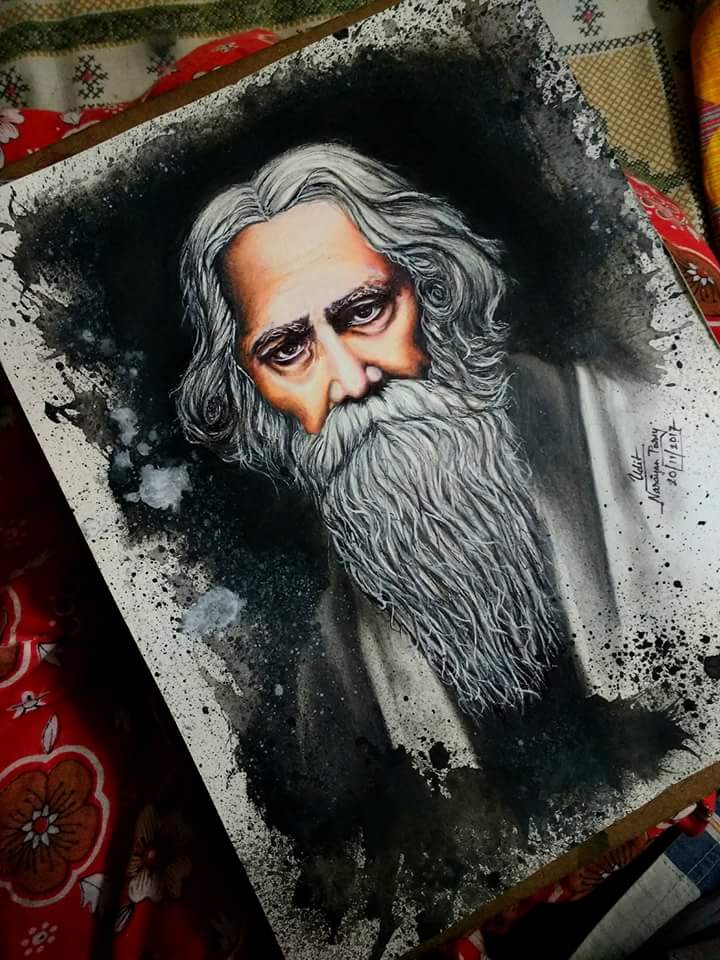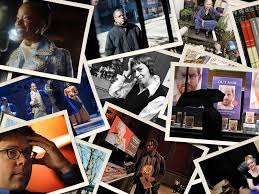
I am supposed to be writing an article on Rabindranath Tagore. Words fall short to describe this great personality and I am always at loss of words at the very thought of him. Hence, I decided to pen down my very personal feelings. I have spent my entire school life in an English medium school where English was highly supported but the Bengali syllabus was left way behind. Like every other student in school, I drifted away from my own mother language over the years. I find expressing myself in English so much more comfortable than doing so in Bengali, just like I am writing this article. However, the presence of Tagore has kept me rooted to my origin all these years. I always prefer reading his pieces in my very own mother language instead of any other. Initially I felt that this might be a very unique habit, restricted only to me. However, I noticed that all my fellow friends had this same habit. Somehow Bengali sounded so easy to us when it came to Tagore, in spite of words that were beyond interpretation to us. Is this some kind of “partiality” on our part?
The first song that I remember hearing was “Phoole Phoole Dhole Dhole”. Whether it be my first recitation or the first song I sang, it has always been something by Rabindranath. Growing up in an atmosphere where Rabindranath Tagore and his works are appreciated by everyone, this can be considered a very natural act on my part. However, over the years I have noticed that, in spite of the fact that tough Bengali words are often not interpreted properly by me in his pieces, I somehow appreciate his works. I understand what he tries to convey and it touches my heart deep down. I guess this is where Rabindranath Tagore is so widely famous among the highly educated and not-so highly educated in the society, alike. Everyone has their own interpretations. But what is common is that everyone can connect with the creator. I feel proud to be a Bengali. To be able to share the same motherland and mother language as him, it is indeed a matter of pride and gratefulness.
By and by, I have noticed that this great man has penned down something for every feeling a human can have, every situation that can exist. His poems show how great a philosopher he was. Right from every season to every raga, every mood to every situation, Tagore’s poems find relevance in every point of life. Songs by him find application everywhere. Be it the music, or the words, his songs are unparalled. His dramas show us the great preacher that resided in him. A preacher who shows us the truths of life. “Nitra nattas” like “Chitrangada” show his wonderful finesse in storytelling. He starts off with the story of a dream and beautifully ends it with the very popular concept of women empowerment and expresses Princess Chitrangada’s dream in between. Again a “nritya natta” by the name “Chandalika” tells us about caste discrimination, a very prevalent topic that finds negligible development since centuries. His drama “Achalayatan” tells us that the value of freedom can be appreciated only when one has been in imprisonment. This particular lesson applies to most of us, considering the fact how we all appreciate our once busy lives, now that we are in this lockdown phase for days. His short stories, essays and novels are masterpieces in their own ways. One amazing thing about pieces by Tagore is that, he never tried to teach anything to anyone. He never once tried to blame or vilify anyone. He described everyone’s point of view, every situation. His works show us every aspect of life. Tagore teaches us how to look at the better side of every situation.
He was a man who had experienced extreme pain all his life. He witnessed the death of his beloved ones right before his eyes. Being such an excellent individual, he was insulted time and again. Yet, in a lifespan of 80 years, Tagore wrote innumerable number of songs, poetries, dramas, essays, novels, short stories and what not. Santiniketan is a visual representation of Rabindranath Tagore’s vision of a place of learning, one that is not discriminated by religious and regional barriers. Santiniketan turned into the Visva Bharati University in 1921, and is the abode to many from far and wide. It is undoubtedly one of Tagore’s masterpieces. However, his works are not limited to these only. He was also a gifted painter. He directed his own “nritya natta”, “Valmiki Pratibha” at a young age of 17. He had travelled far and wide. His interaction with Albert Einstein is known by all and his friendship with W. B. Yeats had lasted for over thirt-seven years.
Rabindranath Tagore cannot be described in mere words. Neither can any amount of dedication match up to his greatness. However, the connection that I feel with him makes me see the world in a brighter way. I feel that all of us can connect with each other through his works. We all have our interpretations. But what does not change is our connection to him. Somehow, Tagore feels so distant and yet, so close to all of us. I would not have read half as many Bengali books as I do, had it not been for my first step into the magical world of Bengali literature, through his works. I had Tagore by my side when I had to express my feelings or cope up with my troubles. His songs gave me company when I was at my lowest. Right from “Kumor Parar Gorur Gari” to “Bishti Pore Tapur Tupur”, followed by “Sonar Tori” and then “Debotaar Graash” and growing up to “Korno Kunti Shongbaad”, I have held Tagore’s hand and grown up. I could not have asked for anything better.
Writer Bio : Ayushi Dey


